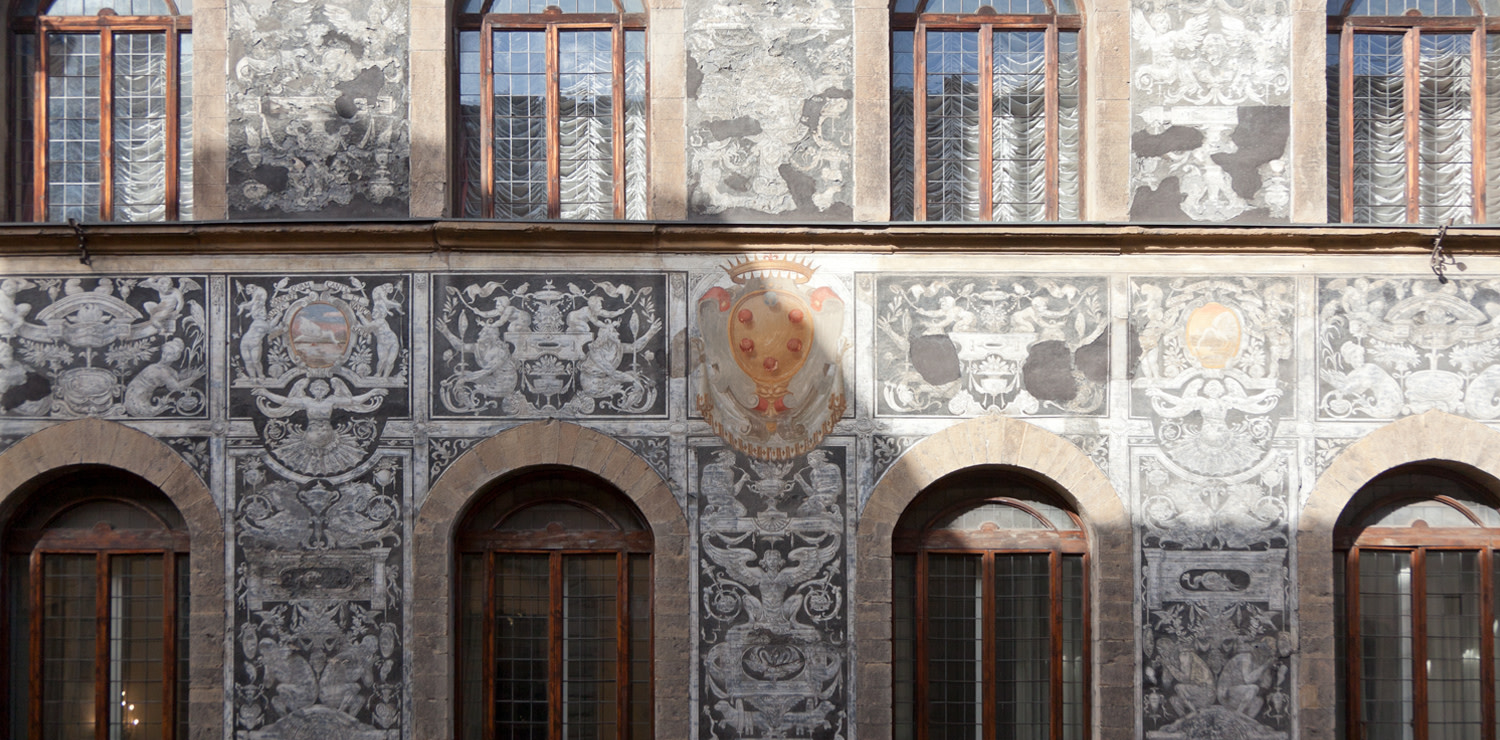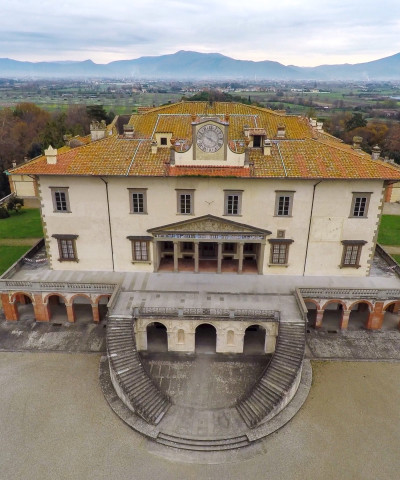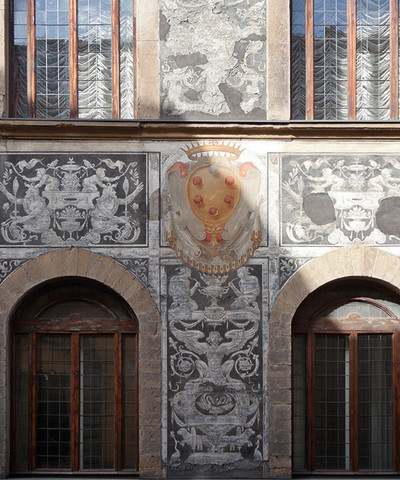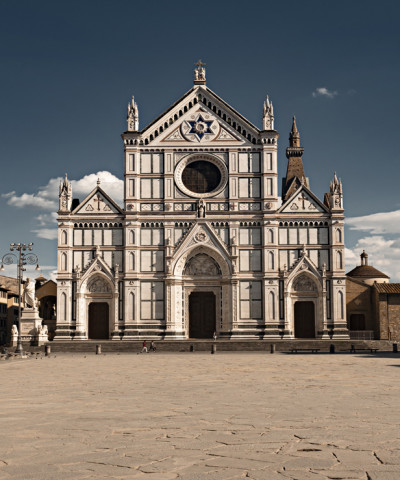Florence and its palaces: the most beautiful buildings and their stories
Fascinating facts and anecdotes about the city's most famous buildings
Florence’s beauty, art and history are enthralling, but while wandering through the streets of the city gazing up, some surprising things are bound to catch your eye: a dog with a herd of sheep in a tile relief of Giotto’s Campanile, basically the signature of the great artist, given he had discovered his artistic talents when he was a little shepherd boy.
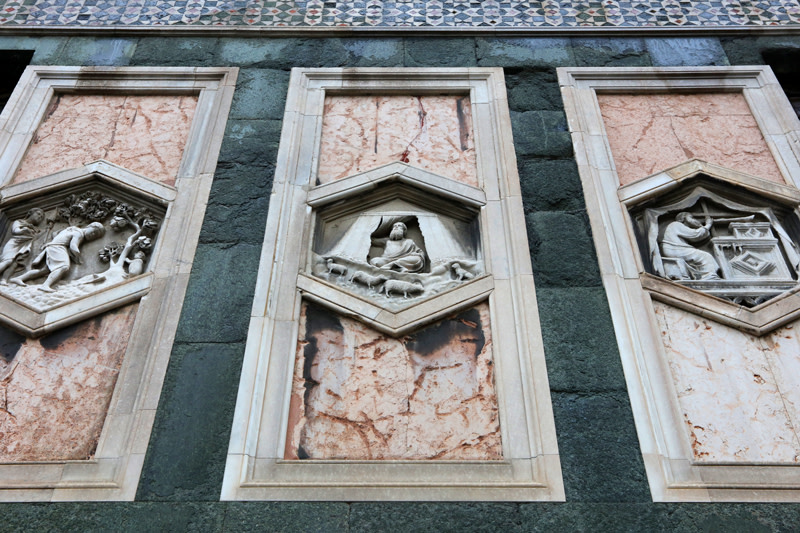 The tile relief of Giotto’s Campanile with the dog (right) he had as children
The tile relief of Giotto’s Campanile with the dog (right) he had as childrenLocated in the heart of the city, across from the Bargello, the Badia Fiorentina is an ancient temple dedicated to the worship of the Virgin. Its preexisting bell tower was destroyed in 1307 because the monks refused to pay taxes. The hexagonal one we see today dates from 1330 and has become an attraction for film buffs who have seen Dan Brown’s Inferno. In a dramatic scene, a mysterious character manages to escape from his chasers by jumping off the bell tower of this church.
A few hundred meters away, at number 18 of Borgo Albizi, there is an odd 15th-century palace, Palazzo dei Visacci. Attached to its facade are 15 statues portraying notable historical Florentine figures carved in 1600 by G.B Caccini using the “schiacciato” (flattened) technique. Despite they are 40 meters above ground, the particular perspective angle makes them seem as if they are looking down at us. “Visacci” (big faces, or ugly faces) because the Florentines could not recognize in those statues their illustrious fellow citizens of the past: Dante, Petrarca, Boccaccio and Lorenzo The Magnificent.
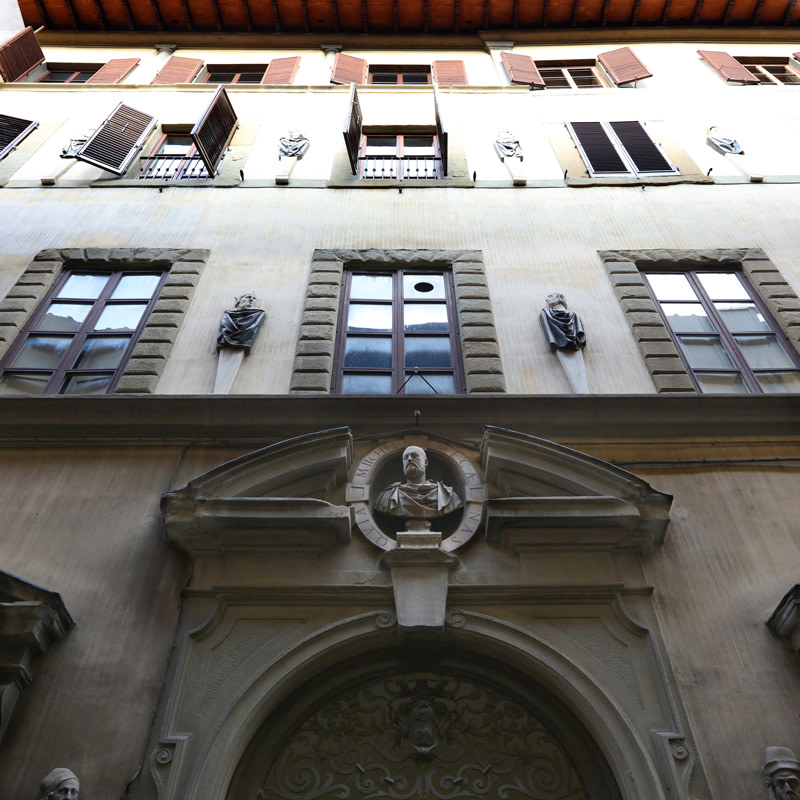 Visacci Palace
Visacci Palace Flanking one side of Piazza della Signoria, the Loggia dei Lanzi takes its name from the ferocious Landsknechts at the service of Charles V, who stopped in Florence to rest during their march towards Rome and set up camp under this loggia. Bernardo Buontalenti converted its roof into a garden, where the Medici could listen to music and enjoy the cool breeze and the views. Today it houses the cafe of the Uffizi Museum.
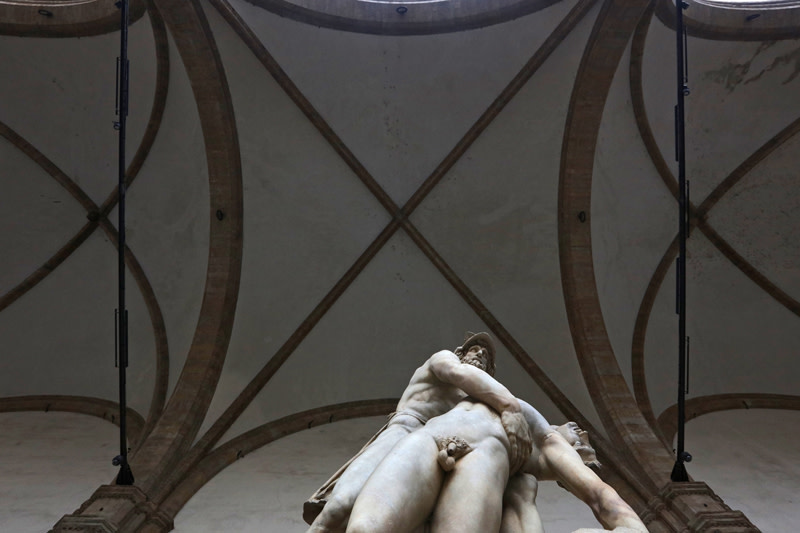 detail of the Loggia dei Lanzi
detail of the Loggia dei LanziNot far from here is an elevated enclosed passageway that runs over the River Arno, constructed by the request of the Grand Duke Cosimo I so he and his family could walk comfortably from Palazzo Vecchio to their residence in Palazzo Pitti across the river. The architect Giorgio Vasari had it built in the 5 months ordered by the Grand Duke, in time for the wedding ceremony of Francesco and Giovanna d’Austria, so he could impress his guests. Midway down the Vasari Corridor two windows open onto the river, affording spectacular views.
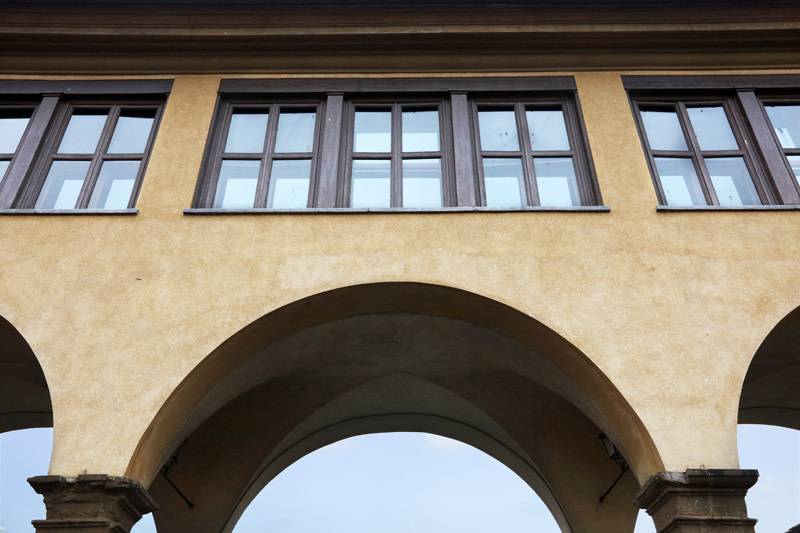 The Vasarian Corridor
The Vasarian CorridorThe butcher and green-grocer shops that once ran along the the sides of the bridge, known as Ponte Vecchio, were later replaced by goldsmith and silversmith workshops, putting an end to the unpleasant smells and unattractive views that people crossing the bridge had to bear. Precisely on Ponte Vecchio, one of the symbols of Florence, you can see a a short column positioned high up near the edge of the roof of one of the shops. It supports a flat stone shaped like a half-moon. It is the Meridiana, a sundial commemorating the flood of 4 November, 1333. All the bridges were swept away by the waters except for Ponte Vecchio, and the ancient instrument still here, measuring time by the position of the sun.
Located at number 25 of Via Maggio, in the Oltrarno district, is the Palace of Bianca Cappello, the Venetian woman who bewitched Francesco I de’ Medici. In order to have her near him, he had this palace built only a few steps away from Palazzo Pitti. Their scandalous love affair was never accepted by the family, not even after the death of Francesco’s wife and his marriage with Bianca. Their story ended with their death, only a few days apart and probably due to poisoning. The palace’s facade is decorated with white grotesques designs depicting rams and large male and female figures.
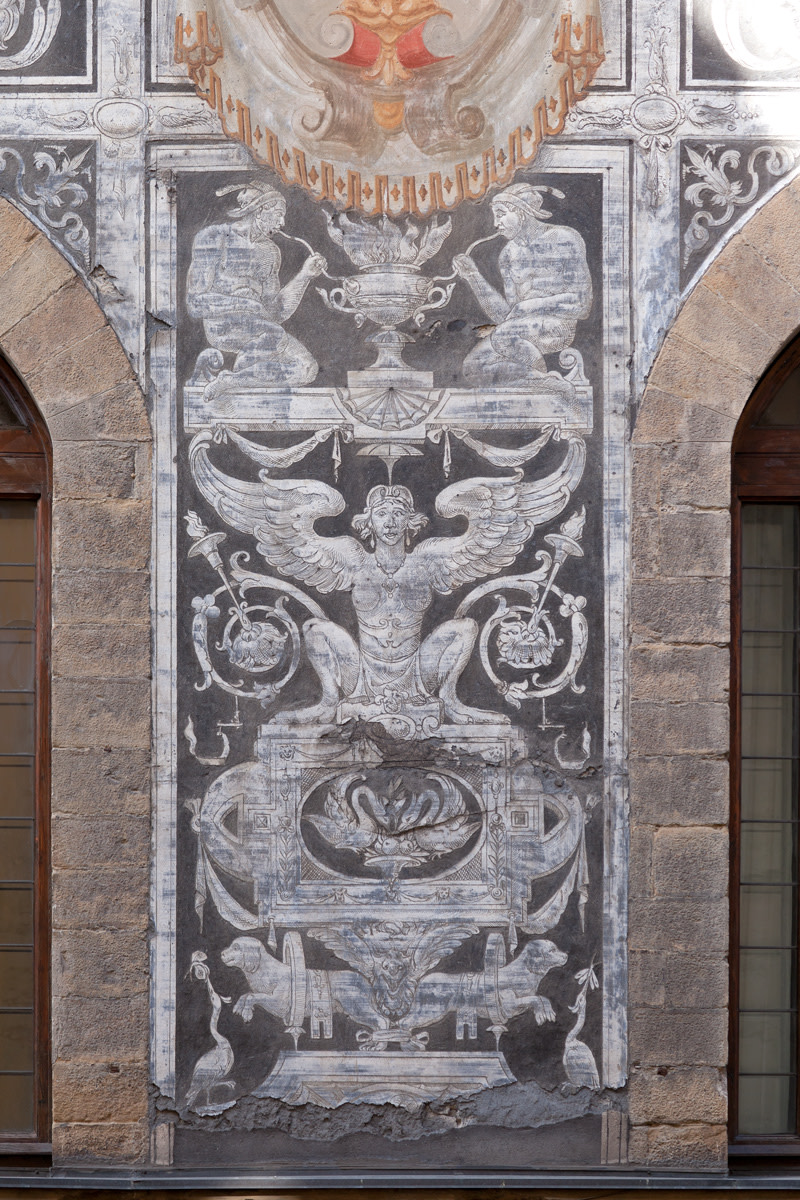 Detail of the Palace of Bianca Cappello (ph. Pierpaolo Pagano)
Detail of the Palace of Bianca Cappello (ph. Pierpaolo Pagano)The artist, G.B. Poccetti, used the graffito technique, which revealed the white color underneath and created the decoration. Bianca was not able to enjoy this wonder, because after marrying Francesco she donated it to the hospital of Santa Maria Nuova.
At the end of Via Maggio, Ponte Santa Trinita leads us to the homonymous piazza where the tallest and loveliest column in Florence stands, the Column of Justice. Donated to Cosimo I by Pope Pius IV, it is a rare archeological find taken from the Baths of Caracalla. The granite monolith weighing 50 tons and measuring 11.17 meters arrived in Florence in September 1563, at the end of an adventurous journey that took around one year. On its summit stands the red marble statue of justice commemorating Florence’s victory over Siena at Marciano.
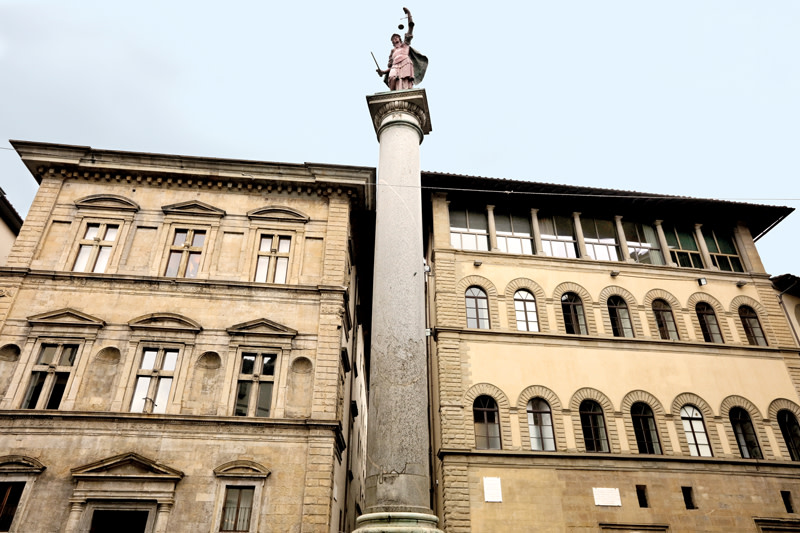 The Column of Justice
The Column of JusticeAnother extraordinary site is Orsanmichele. It housed the city’s grain market before being converted into a church and becoming the place of worship of Florence’s craft and trade guilds.
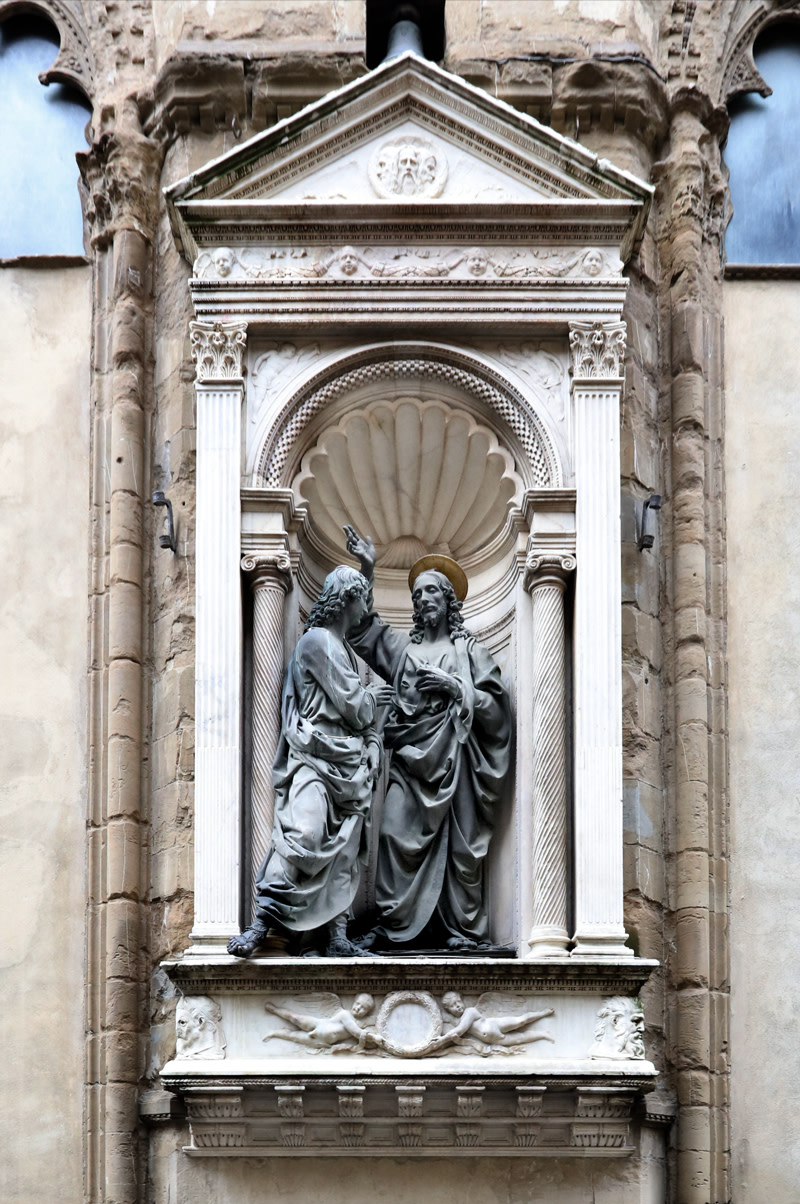 Exterior of the Orsanmichele church
Exterior of the Orsanmichele churchInstalled inside the exterior niches are statues of the patron saints of each craft and trade, works of the greatest sculptors of the Renaissance: Ghiberti, Brunelleschi, Verrocchio and Luca della Robbia.






